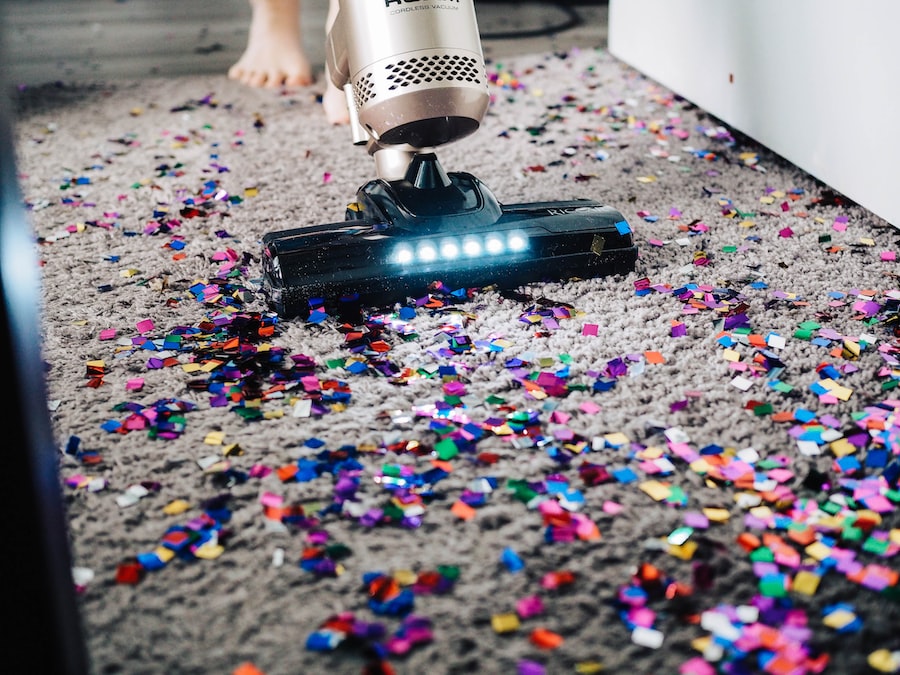A clean warehouse environment offers numerous benefits for businesses. Firstly, it promotes the health and safety of employees. A clean warehouse reduces the risk of accidents and injuries caused by slips, trips, and falls. It also minimizes the presence of dust, allergens, and other contaminants that can cause respiratory problems or allergies among workers.
Secondly, a clean warehouse improves efficiency and productivity. When the workspace is organized and free from clutter, employees can easily locate items and complete tasks more quickly. Additionally, a clean environment promotes better focus and concentration, leading to higher productivity levels.
On the other hand, a dirty warehouse can have negative consequences for businesses. It can lead to increased accidents and injuries, resulting in higher insurance costs and potential legal liabilities. A dirty warehouse can also lead to decreased productivity as employees struggle to find items or navigate through cluttered spaces. Moreover, a dirty environment can damage inventory or equipment, leading to additional costs for repairs or replacements.
Introduction to Robot Floor Cleaning Machines
Robot floor cleaning machines are autonomous devices designed to clean floors in various settings, including warehouses. These machines use advanced technology to navigate through spaces and perform cleaning tasks efficiently and effectively.
There are different types of robot floor cleaning machines available in the market. Some models are designed for small spaces, while others are suitable for larger areas like warehouses. These machines come equipped with various features such as sensors, brushes, and vacuum systems to ensure thorough cleaning.
Robot floor cleaning machines work by using sensors to detect obstacles and navigate around them. They can be programmed to follow specific routes or patterns to cover the entire floor area. The machines use brushes or vacuum systems to remove dirt, dust, and debris from the floor surface. Some models also have mopping capabilities for wet cleaning.
Benefits of Using Robot Floor Cleaning Machines in Warehouses
Using robot floor cleaning machines in warehouses offers several benefits for businesses.
Increased efficiency and productivity: Robot floor cleaning machines can clean large areas quickly and efficiently, saving time and effort for employees. This allows them to focus on more important tasks, leading to increased productivity.
Improved cleaning quality: Robot floor cleaning machines are designed to deliver consistent and thorough cleaning results. They can reach areas that are difficult to access manually, ensuring a deep clean of the entire floor surface.
Cost savings: While the initial investment in a robot floor cleaning machine may be higher compared to traditional cleaning methods, it can lead to long-term cost savings. These machines require minimal maintenance and can operate autonomously, reducing the need for manual labor.
Reduced labor costs: By automating the cleaning process, businesses can reduce the need for manual labor in maintaining cleanliness in the warehouse. This can result in significant cost savings in terms of wages and benefits for employees.
Factors to Consider When Choosing a Robot Floor Cleaning Machine
| Benefits of Using Robot Floor Cleaning Machines in Warehouses |
|---|
| 1. Increased Efficiency |
| 2. Improved Cleaning Quality |
| 3. Reduced Labor Costs |
| 4. Enhanced Safety |
| 5. Consistent Cleaning Performance |
| 6. Reduced Downtime |
| 7. Increased Productivity |
| 8. Lower Maintenance Costs |
| 9. Improved Sustainability |
When choosing a robot floor cleaning machine for your warehouse, there are several factors to consider.
Size and layout of the warehouse: The size and layout of your warehouse will determine the type and size of robot floor cleaning machine you need. Larger warehouses may require machines with a wider cleaning path or longer battery life.
Type of flooring: Different types of flooring may require different cleaning methods or attachments. Consider the type of flooring in your warehouse and ensure that the robot floor cleaning machine you choose is suitable for that specific type.
Cleaning requirements: Assess your cleaning requirements, including the frequency of cleaning and the level of dirt or debris present. Some robot floor cleaning machines are better suited for heavy-duty cleaning, while others are more suitable for light maintenance.
Budget: Consider your budget when choosing a robot floor cleaning machine. While it may be tempting to opt for the cheapest option, it is important to balance cost with quality and features to ensure you get the best value for your investment.
Preparing Your Warehouse for Robot Floor Cleaning Machine Operation
Before operating a robot floor cleaning machine in your warehouse, it is important to prepare the space to ensure optimal performance and safety.
Clearing the floor: Remove any obstacles or clutter from the floor surface to allow the robot floor cleaning machine to navigate freely. This includes moving any equipment, pallets, or debris that may obstruct its path.
Marking off areas: If there are specific areas in your warehouse that you do not want the robot floor cleaning machine to enter, mark them off using barriers or signs. This will prevent the machine from accidentally entering restricted areas.
Ensuring safety measures are in place: Before operating the robot floor cleaning machine, ensure that all necessary safety measures are in place. This includes checking that emergency stop buttons are functional and that employees are aware of the machine’s presence and how to safely interact with it.
Operating a Robot Floor Cleaning Machine: Step-by-Step Guide

Operating a robot floor cleaning machine in your warehouse involves several steps to ensure proper functioning and optimal cleaning results.
Preparing the machine: Before starting the machine, ensure that it is properly charged or has sufficient battery life to complete the cleaning task. Check that all brushes, filters, and other attachments are clean and in good condition.
Starting the machine: Once the machine is prepared, turn it on and select the appropriate cleaning mode or program. Some machines may require manual input of the cleaning route or pattern, while others may have pre-programmed options.
Monitoring the cleaning process: While the robot floor cleaning machine is in operation, monitor its progress to ensure that it is cleaning effectively and efficiently. Keep an eye out for any obstacles or issues that may require intervention.
Shutting down the machine: Once the cleaning task is complete, shut down the machine and clean any brushes or filters as necessary. Store the machine in a designated area or charging station until its next use.
Tips for Maximizing Efficiency and Effectiveness of Robot Floor Cleaning Machines
To maximize the efficiency and effectiveness of robot floor cleaning machines in warehouses, consider the following tips:
Scheduling cleaning times: Set a regular schedule for the robot floor cleaning machine to operate in your warehouse. This will ensure that the floors are consistently cleaned without disrupting other operations.
Regular maintenance: Perform regular maintenance tasks on the robot floor cleaning machine to keep it in optimal condition. This includes cleaning brushes and filters, checking for any loose or damaged parts, and ensuring that sensors are functioning properly.
Proper training for operators: Provide proper training to employees who will be operating the robot floor cleaning machine. This includes instruction on how to start and shut down the machine, how to monitor its progress, and how to troubleshoot common issues.
Maintenance and Cleaning of Robot Floor Cleaning Machines
Regular maintenance and cleaning of robot floor cleaning machines are essential to ensure their longevity and optimal performance.
Regular cleaning and maintenance tasks: Clean brushes, filters, and other attachments regularly to remove dirt and debris. Check for any loose or damaged parts and replace them as necessary. Keep sensors clean and free from obstructions.
Troubleshooting common issues: Familiarize yourself with common issues that may arise with robot floor cleaning machines and how to troubleshoot them. This includes issues with battery life, navigation, or cleaning performance.
Safety Precautions When Operating Robot Floor Cleaning Machines
Safety should be a top priority when operating robot floor cleaning machines in warehouses.
Proper training for operators: Ensure that employees who will be operating the robot floor cleaning machine receive proper training on safety procedures. This includes understanding how to safely interact with the machine, how to respond to emergencies, and how to avoid accidents.
Safety measures to prevent accidents: Implement safety measures such as barriers or signs to mark off areas that the robot floor cleaning machine should not enter. Ensure that emergency stop buttons are easily accessible and functional.
Cost Considerations and Return on Investment for Robot Floor Cleaning Machines in Warehouses
While the initial investment in a robot floor cleaning machine may be higher compared to traditional cleaning methods, it can lead to significant cost savings and a positive return on investment in the long run.
Initial investment costs: Consider the upfront costs of purchasing a robot floor cleaning machine, including the cost of the machine itself, any necessary attachments or accessories, and any installation or setup fees.
Long-term cost savings: Robot floor cleaning machines require minimal maintenance and can operate autonomously, reducing the need for manual labor. This can result in significant cost savings in terms of wages and benefits for employees.
Return on investment: Calculate the potential return on investment by comparing the cost savings achieved through using a robot floor cleaning machine with the initial investment costs. Consider factors such as labor savings, increased productivity, and reduced maintenance costs.
Maintaining a clean warehouse environment is crucial for businesses to ensure the safety and well-being of employees and promote efficiency and productivity. Robot floor cleaning machines offer an effective solution for maintaining cleanliness in warehouses. These machines provide numerous benefits, including increased efficiency and productivity, improved cleaning quality, cost savings, and reduced labor costs. By considering factors such as warehouse size, flooring type, cleaning requirements, and budget, businesses can choose the right robot floor cleaning machine for their needs. Proper preparation, operation, maintenance, and safety precautions are essential for maximizing the efficiency and effectiveness of these machines. With careful consideration and implementation, robot floor cleaning machines can be a valuable asset for maintaining a clean and organized warehouse environment.

